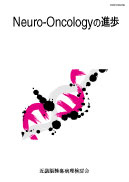Volume 21, Issue 2
Displaying 1-12 of 12 articles from this issue
- |<
- <
- 1
- >
- >|
-
2014 Volume 21 Issue 2 Pages M1-M4
Published: 2014
Released on J-STAGE: September 07, 2014
Download PDF (493K) -
2014 Volume 21 Issue 2 Pages 1-9
Published: September 05, 2014
Released on J-STAGE: September 07, 2014
Download PDF (11514K) -
2014 Volume 21 Issue 2 Pages 10-18
Published: September 05, 2014
Released on J-STAGE: September 07, 2014
Download PDF (1783K) -
2014 Volume 21 Issue 2 Pages 19-24
Published: September 05, 2014
Released on J-STAGE: September 07, 2014
Download PDF (4798K) -
2014 Volume 21 Issue 2 Pages 25-26
Published: September 05, 2014
Released on J-STAGE: September 07, 2014
Download PDF (714K) -
2014 Volume 21 Issue 2 Pages 27-30
Published: September 05, 2014
Released on J-STAGE: September 07, 2014
Download PDF (1393K) -
2014 Volume 21 Issue 2 Pages 31-36
Published: September 05, 2014
Released on J-STAGE: September 07, 2014
Download PDF (10249K) -
2014 Volume 21 Issue 2 Pages 37-43
Published: September 05, 2014
Released on J-STAGE: September 07, 2014
Download PDF (5657K) -
2014 Volume 21 Issue 2 Pages 44-47
Published: September 05, 2014
Released on J-STAGE: September 07, 2014
Download PDF (2807K) -
2014 Volume 21 Issue 2 Pages 48-57
Published: 2014
Released on J-STAGE: September 07, 2014
Download PDF (3201K) -
2014 Volume 21 Issue 2 Pages 58-59
Published: 2014
Released on J-STAGE: September 11, 2014
Download PDF (532K) -
2014 Volume 21 Issue 2 Pages M5-M7
Published: 2014
Released on J-STAGE: September 07, 2014
Download PDF (174K)
- |<
- <
- 1
- >
- >|
